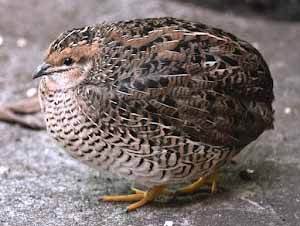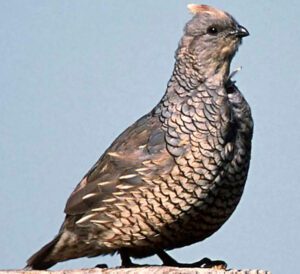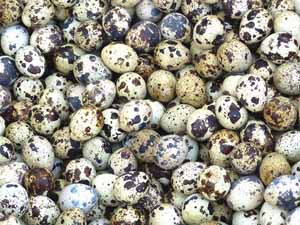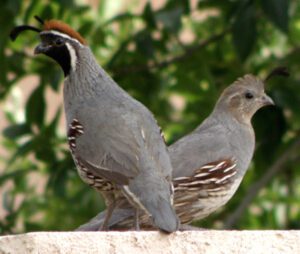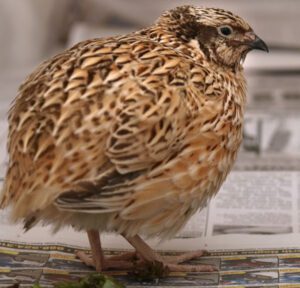The Northern bobwhite quail is a ground-living bird which is a member of the New World quails. It is also called as Virginia quail or simply as Bobwhite quail.
And it is native to the Caribbean, Mexico and the United States. These birds were initially placed with the Old World quail in the pheasant family, but they are not particularly closely related.
Name of the breed ‘bobwhite‘ derives from it’s characteristic whistling call. The Northern bobwhite quail is one of the most familiar quails in eastern North America, despite it’s secretive nature (because it is frequently the only quail in it’s range).
These birds can be found year-round in agricultural fields, grassland, roadsides, wood edges and open woodland areas.
Their range covers the southeastern quadrant of the United States from the Great Lakes and southern Minnesota east to Pennsylvania and southern Massachusetts. And extending west to southern Nebraska, Oklahoma, Kansas and all but westernmost Texas.
There are 21 subspecies of the Northern bobwhite quail in 3 groups. Many of these subspecies are hunted extensively as game birds.
Today the breed is popular throughout the world, with healthy captive populations everywhere where bird-keeping is enjoyed.
Certain countries/states require permits and record keeping, as the possibility that an introduced population may compete with or spread diseases with native quail is a real threat. Read some more information about the Northern bobwhite quail in the chart below.
Northern Bobwhite Quail Characteristics
The Northern bobwhite quail is a very beautiful bird with a moderate size. It is the only small galliform native to eastern North America, and it has the typical chunky, rounded shape of a quail. Bill of these birds is short, curved and generally brown-black in color.
The males and females are easily distinguishable from one another. The males have a white throat and brow stripe bordered by black.
The overall rufous plumage has gray mottling on the wings, white scalloped stripes on the flanks, and black scallops on the whitish underparts.
Both males and females have gray tail, and have pale legs and feet. The females are similar but are duller overall and have a buff throat and brow without the black border.
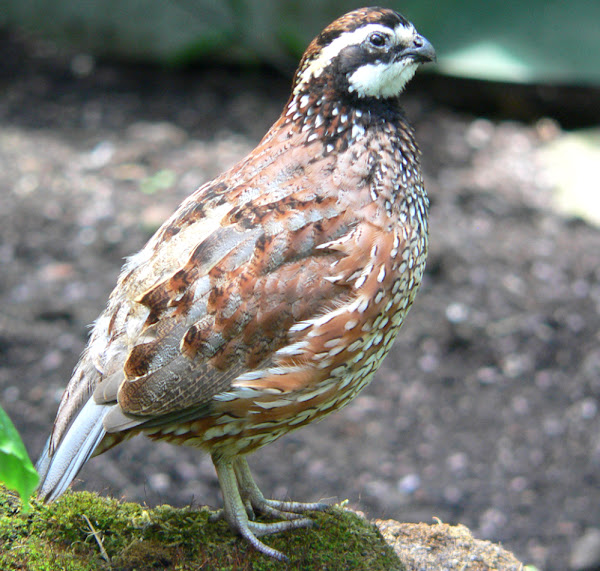
The Northern bobwhite quail can range from 24 to 28 cm in length with an average wingspan of 33 to 38 cm. As indicated by body mass, weights increase in birds found further north, as corresponds to Bergmann’s rule.
In Mexico, northern bobwhites weigh from 129-159 grams, whereas in the north they average 170-173 grams and large males can attain as much as 255 grams. Photo and information from Wikipedia.
Uses
The Northern bobwhite quail is raised mainly as pets or just as a hobby.
Special Notes
The Northern bobwhite quails are hardy and active birds. They do very well in their native environments, but also can survive throughout the world.
Like most other game birds, these birds are shy and elusive in nature. Their diet consists of plants, seeds and small invertebrates (such as grasshoppers, patalo beetles, snails and ticks).
They generally forage on the ground in open areas with some spots of taller vegetation.
The Northern bobwhite quail is generally monogamous, but there is also some evidence of polygamy.
The females can lay about 12 to 16 eggs, and a pair may raise one or two broods annually. Both males and females incubate a brood for 23-24 days, and the precocial young leave the nest shortly after hatching.
And both males and females lead the young birds to food and care for them for 14 to 16 days until their first flight. However, review full breed profile of the Northern bobwhite quail in the chart below.
| Breed Name | Northern Bobwhite |
| Other Names | Virginia quail, Bobwhite quail |
| Breed Purpose | Pets, hobby |
| Special Notes | Very strong and hardy birds, active, generally a ground-living bird, they spend most of their time on the ground, they generally eat plants and seeds, do very well in their native environment, but also can survive well throughout the world, they are shy and elusive, their main diet consists of plants, seeds and small invertebrates, the females lay between 12 and 16 eggs, and a pair may raise one or two broods annually, the young leave the nest shortly after hatching |
| Species | New World Quail |
| Weight | Between 130 and 255 grams |
| Climate Tolerance | Almost all climates |
| Egg Color | Dull or creamy white |
| Egg Size/Weight | 8 to 13 grams |
| Egg Productivity | 12-16 eggs clutch size |
| Body Color | Intricately patterned in black, buff, brown and rufous |
| Rarity | Common |
| Country/Place of Origin | United States |

